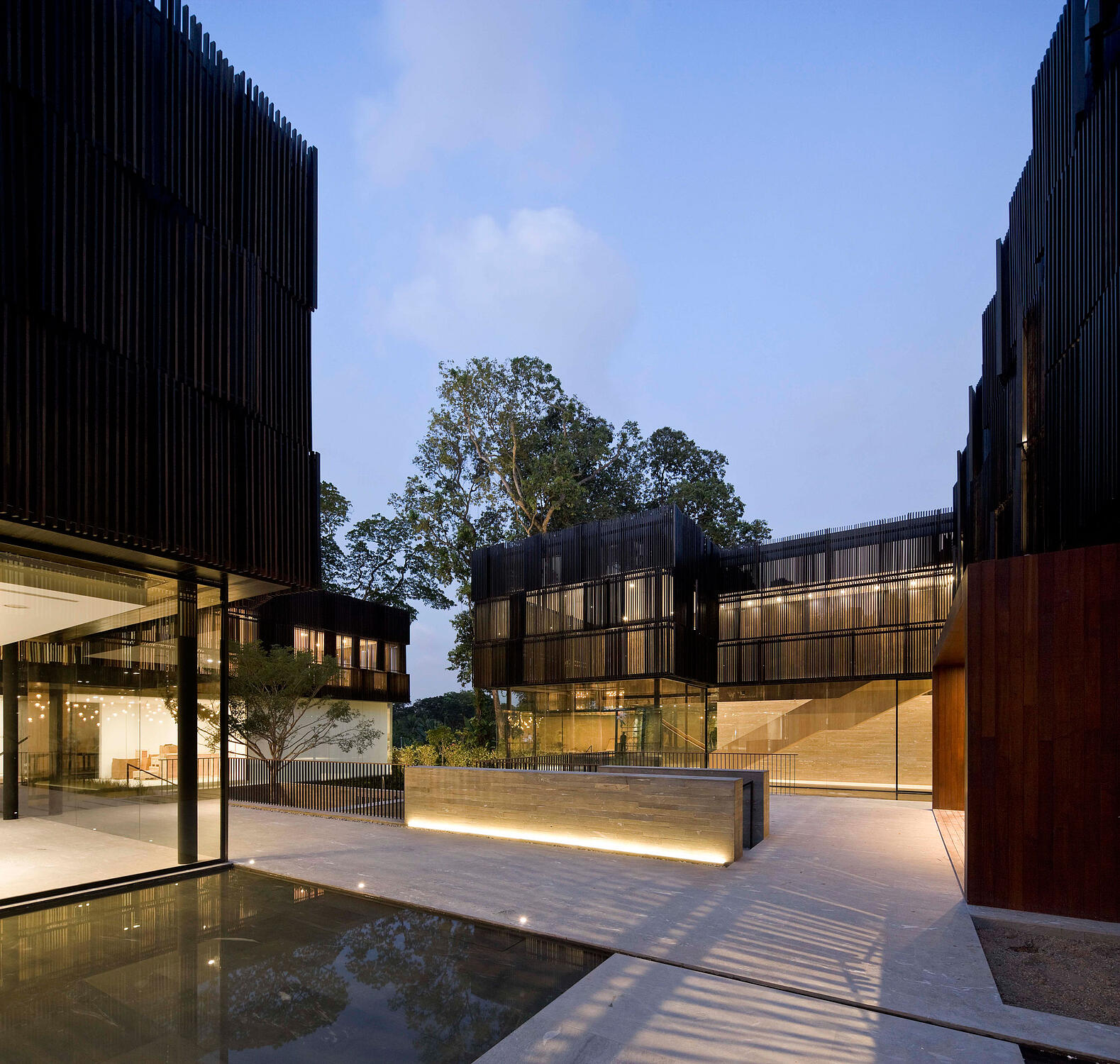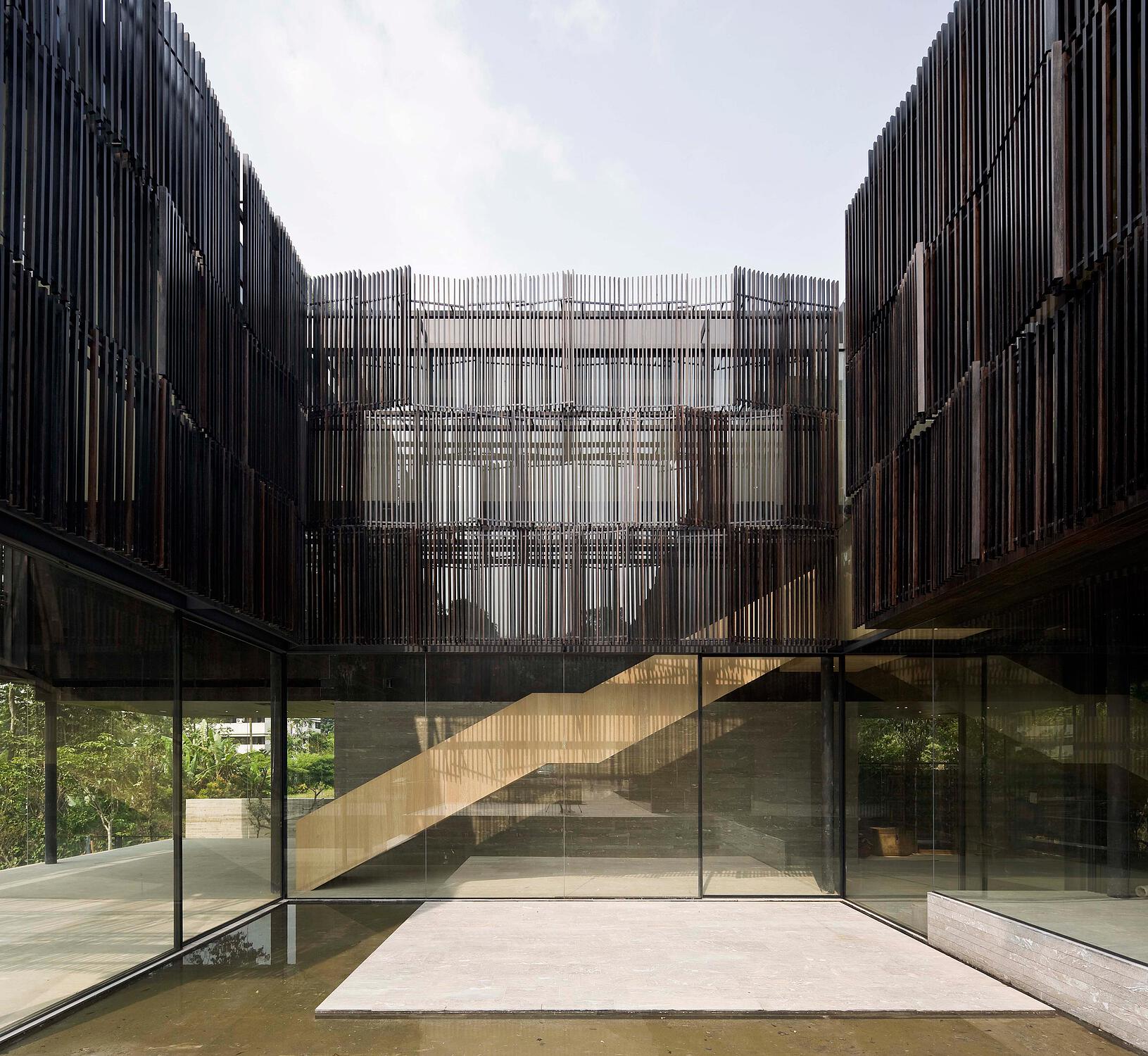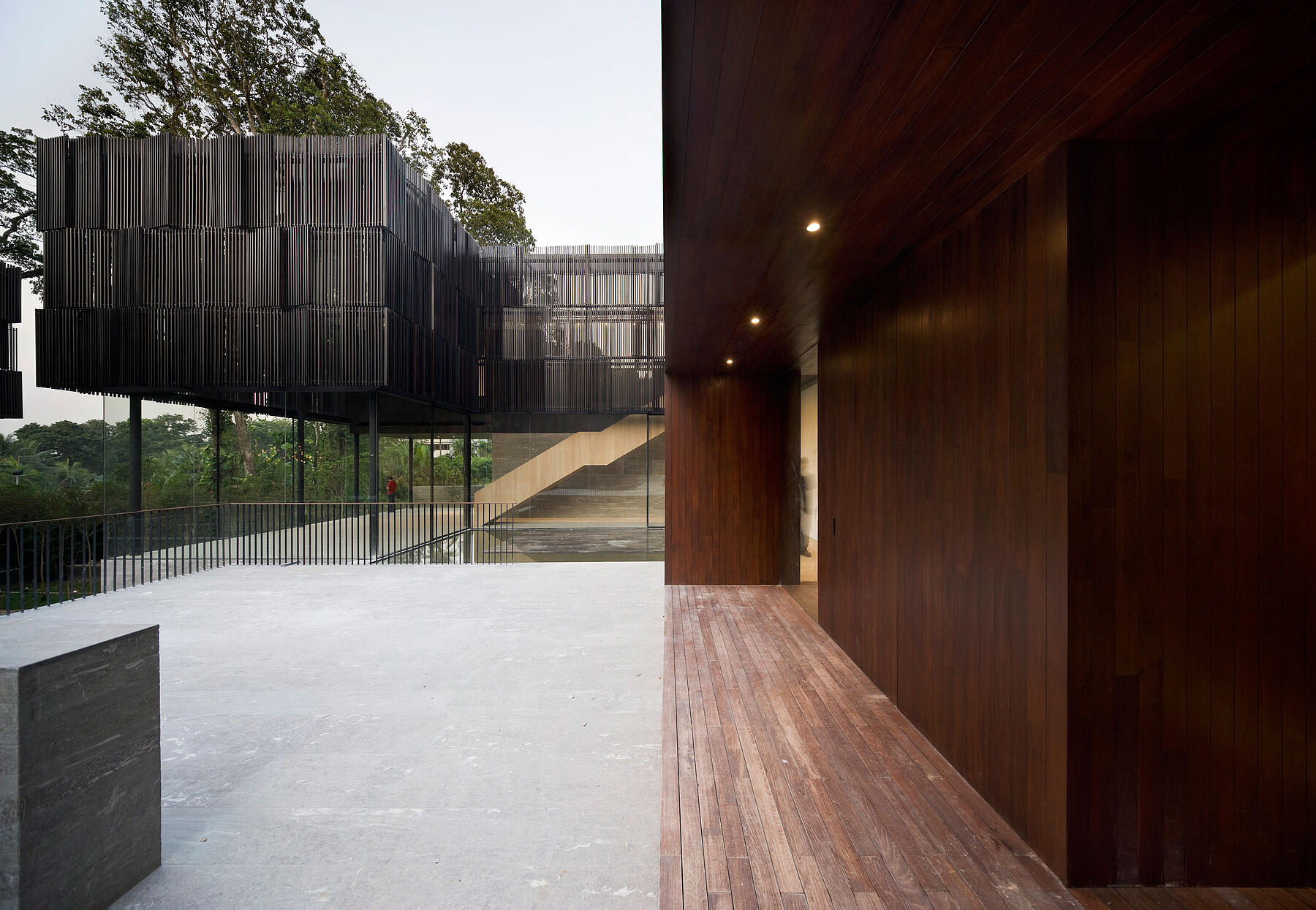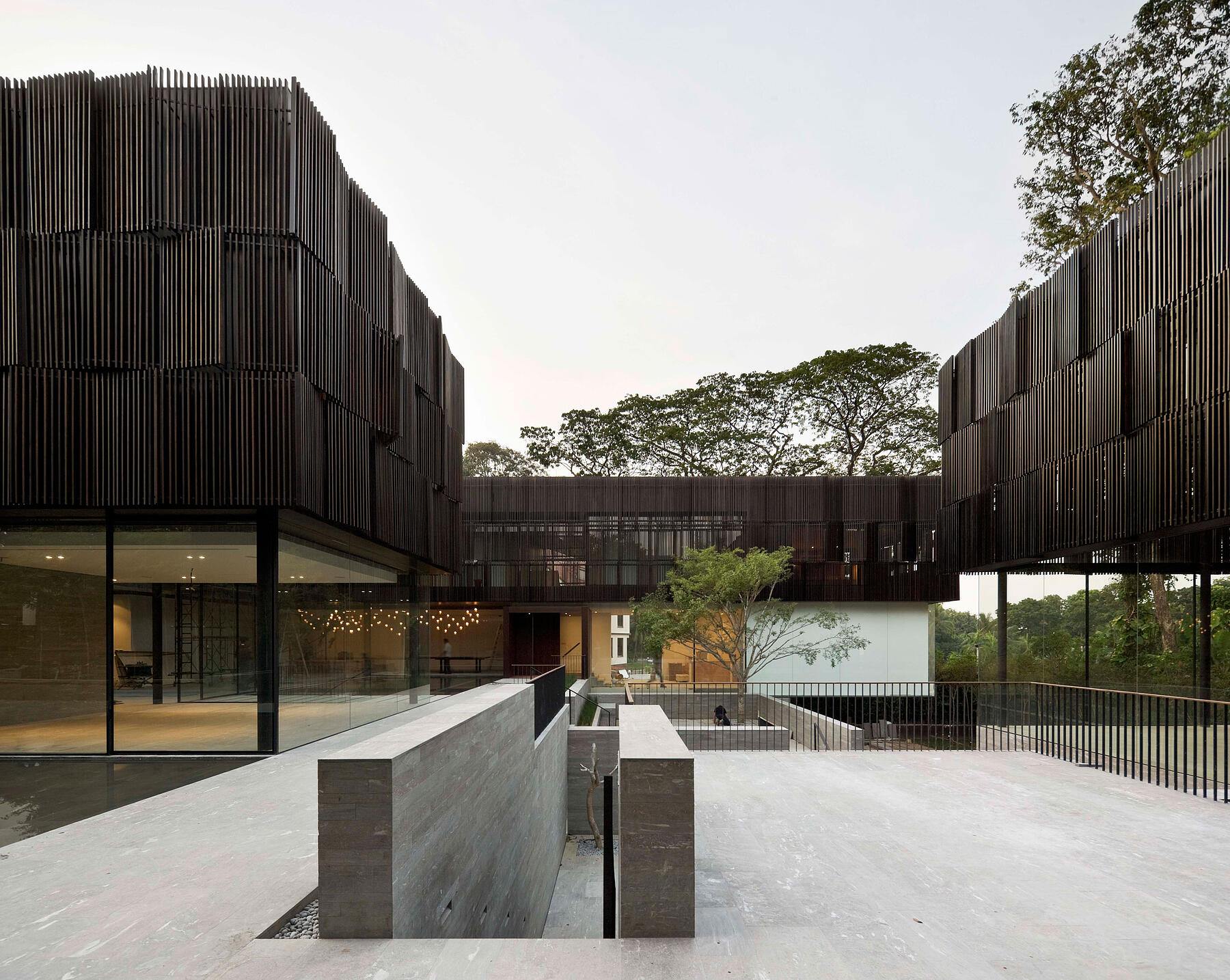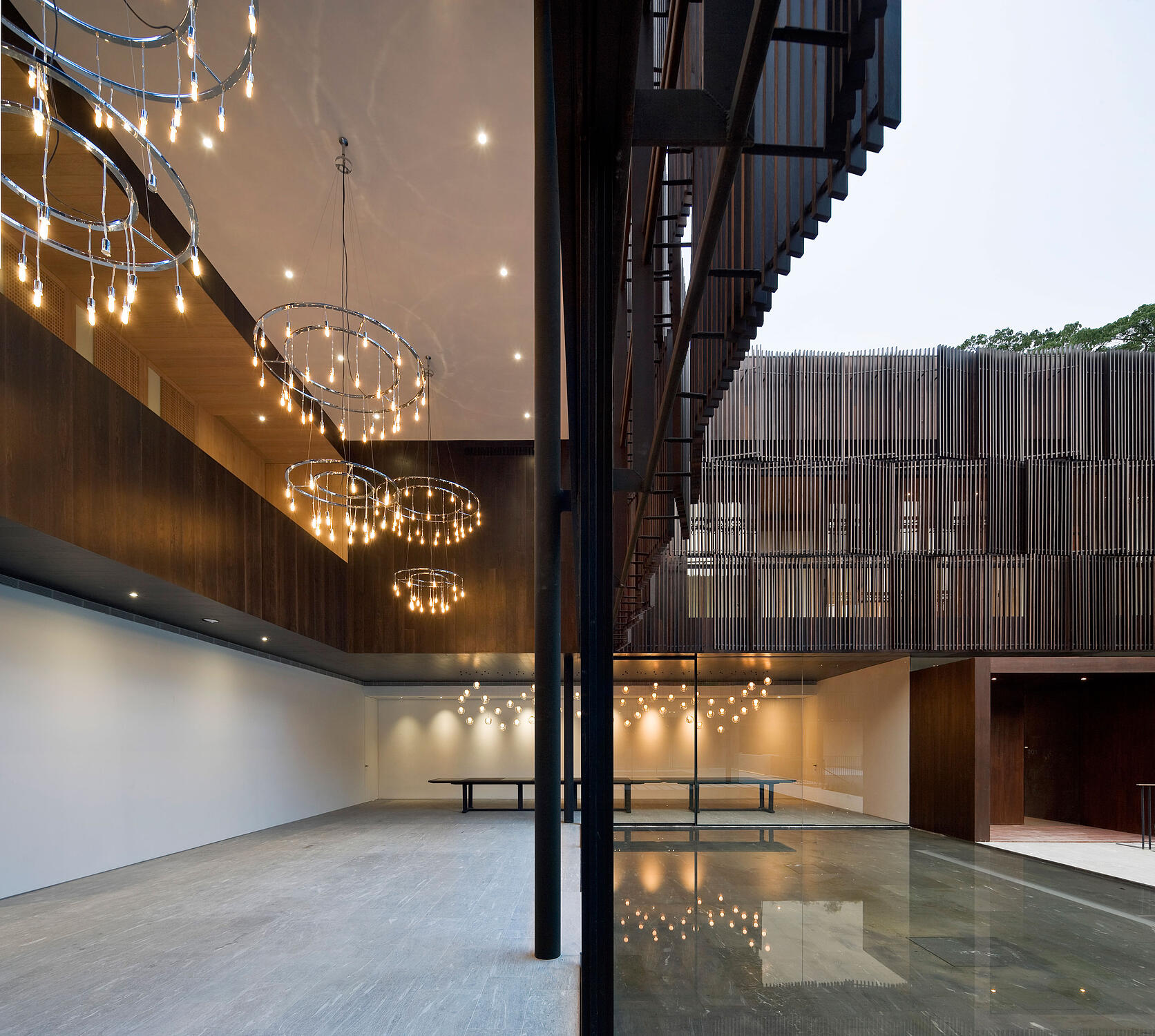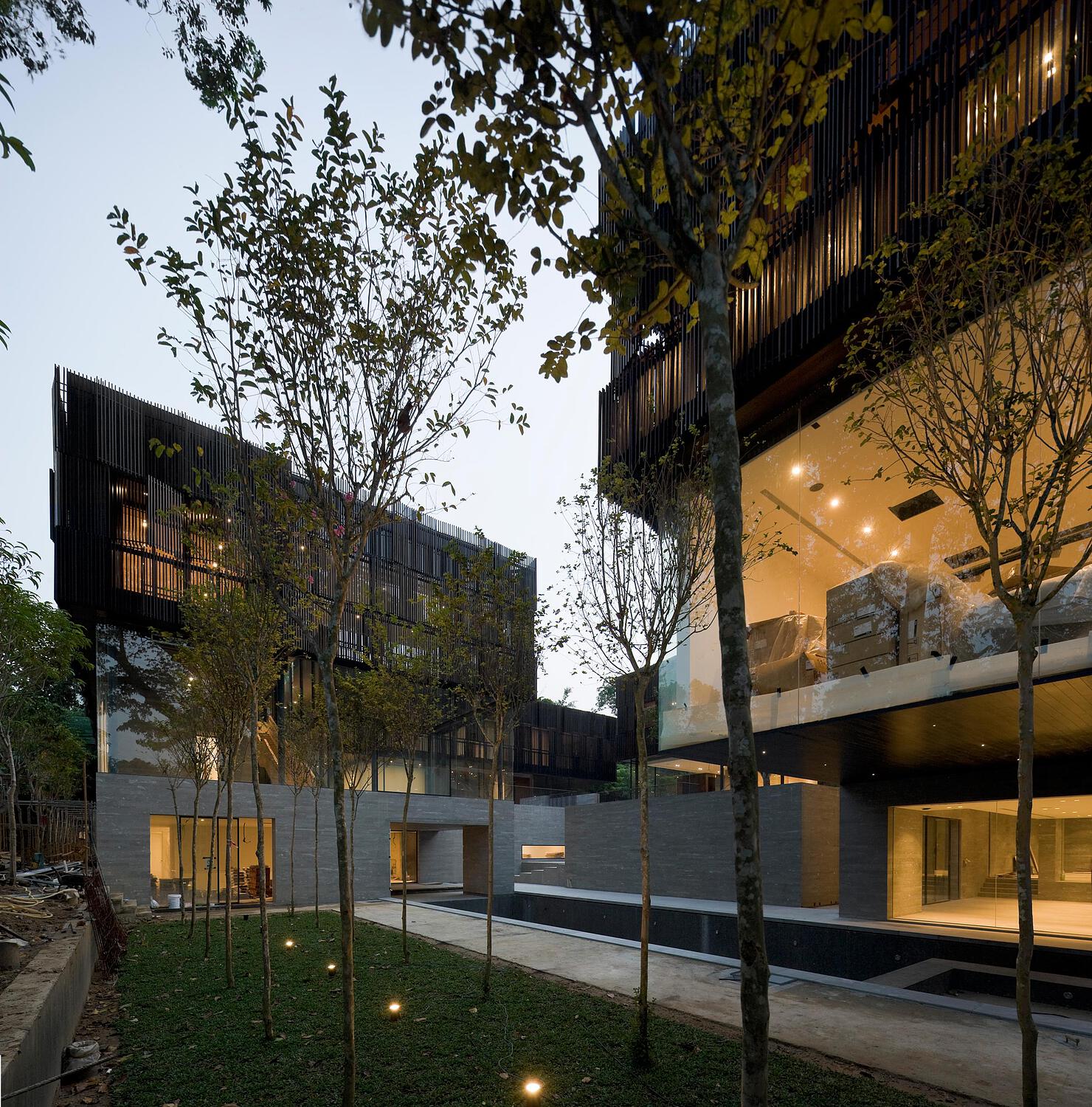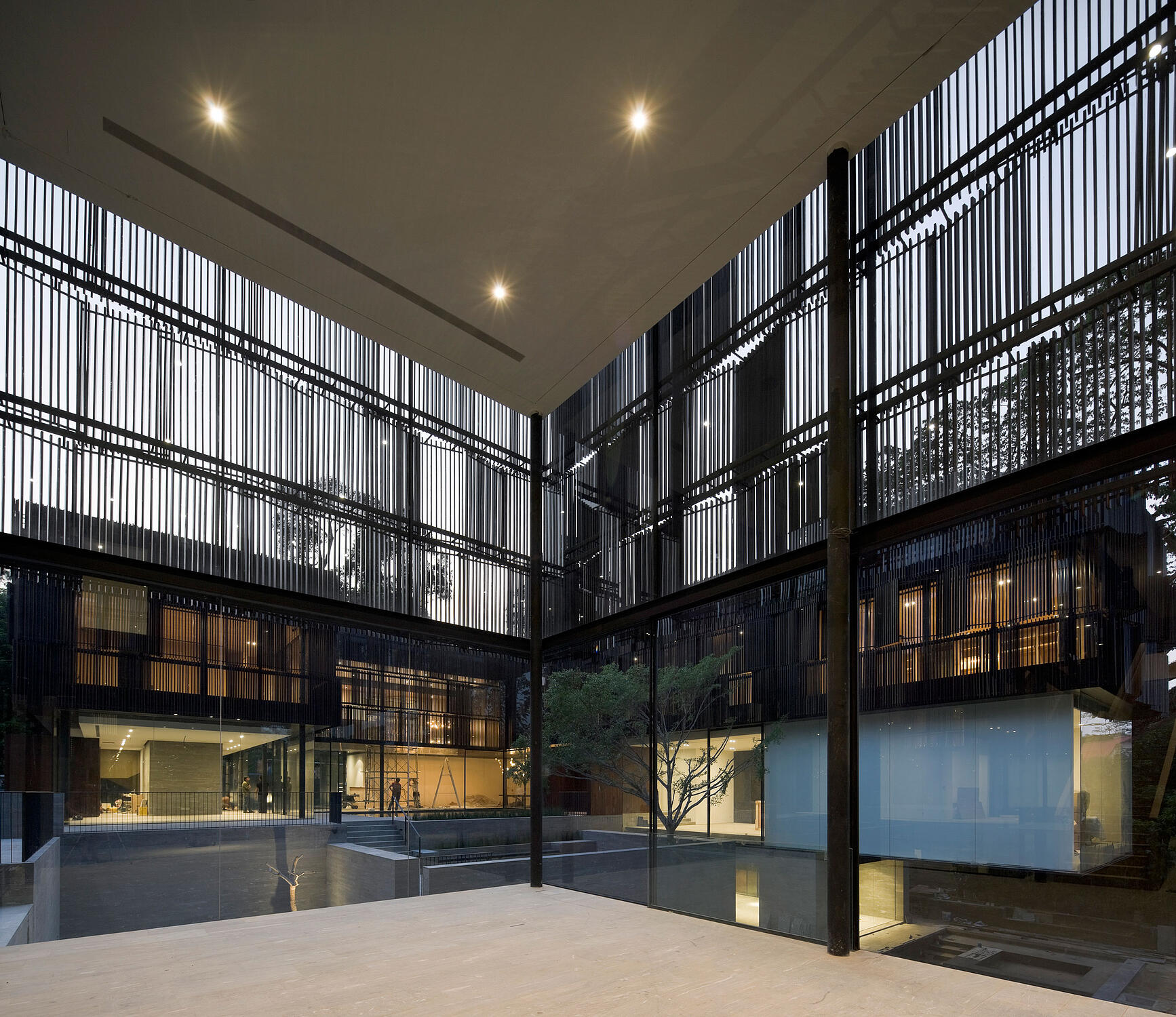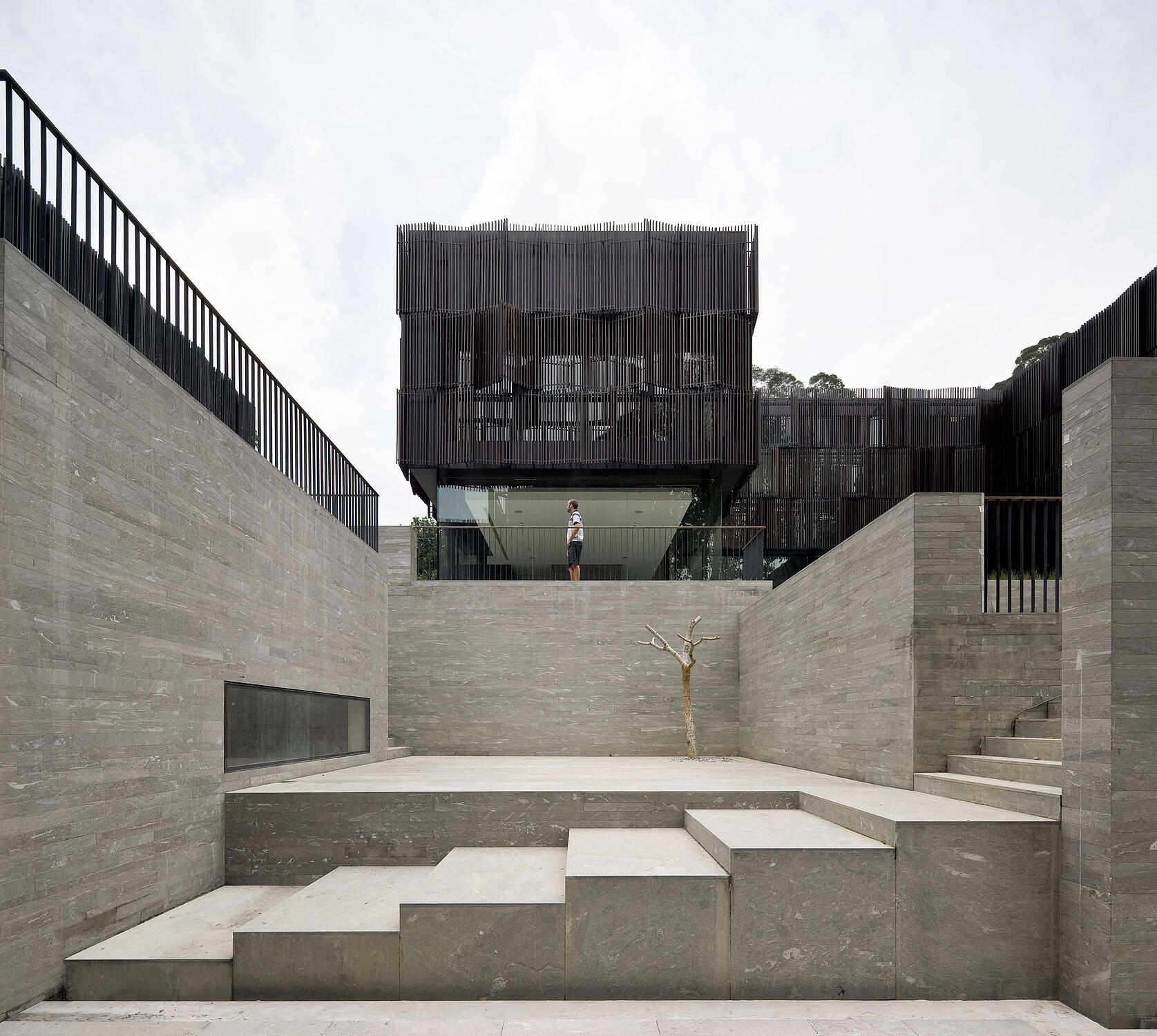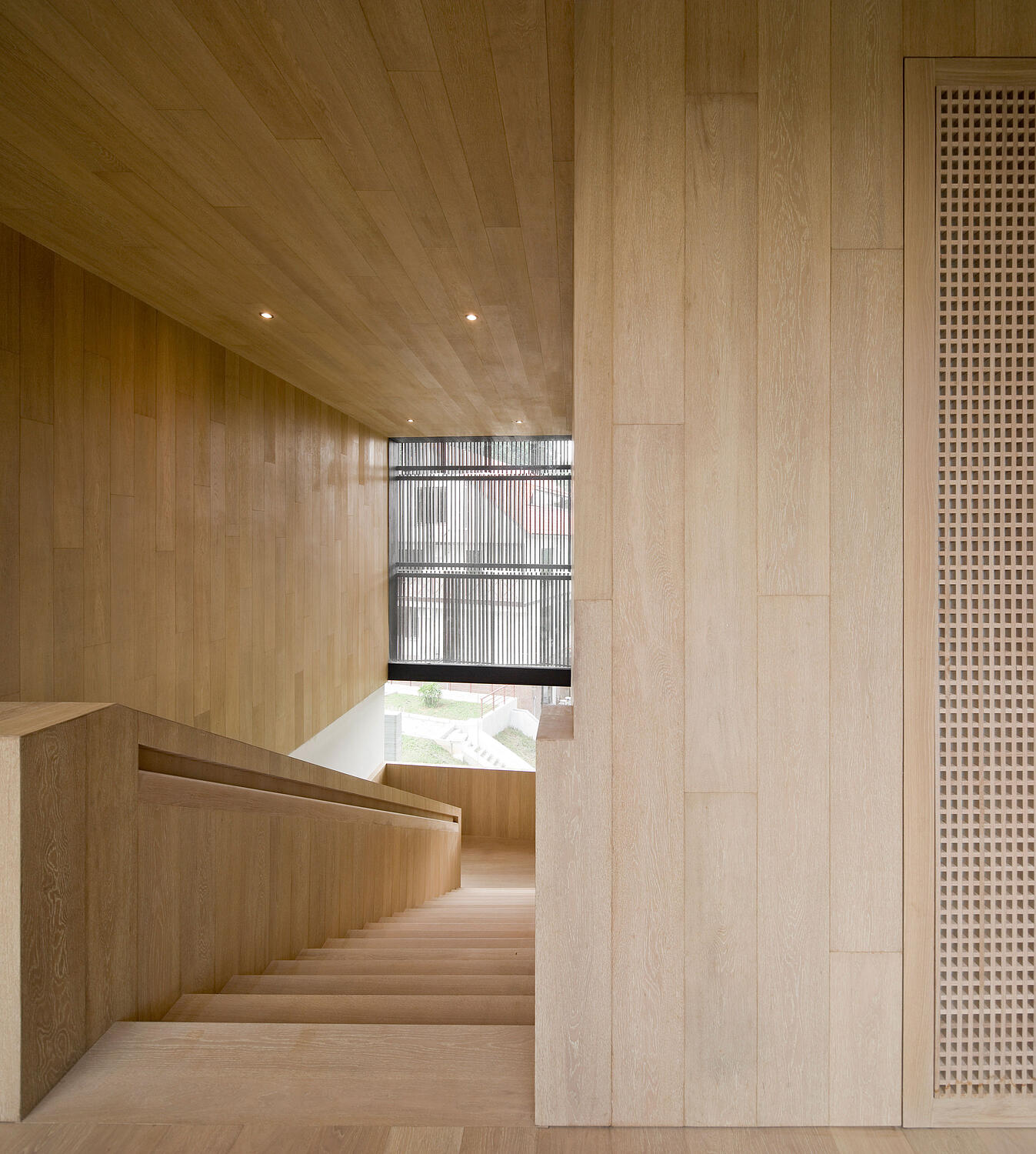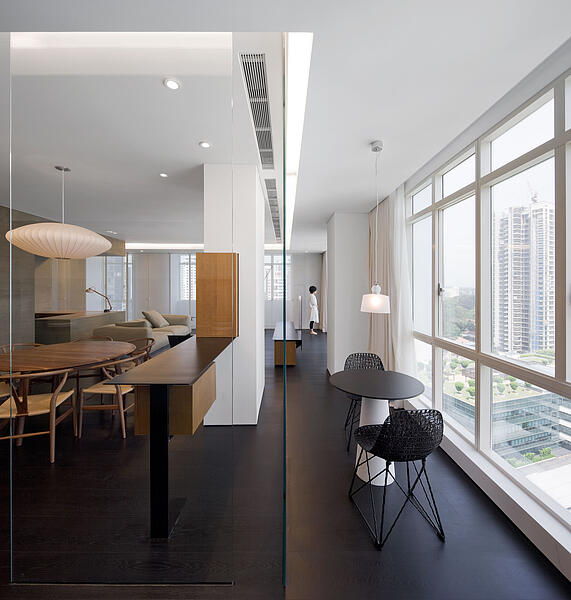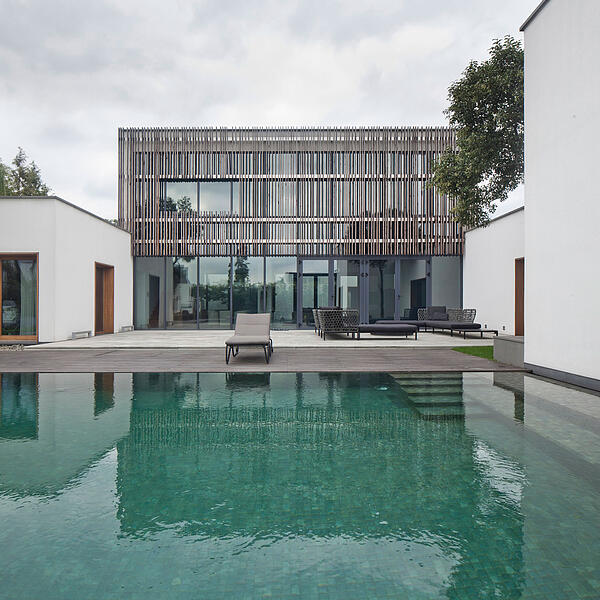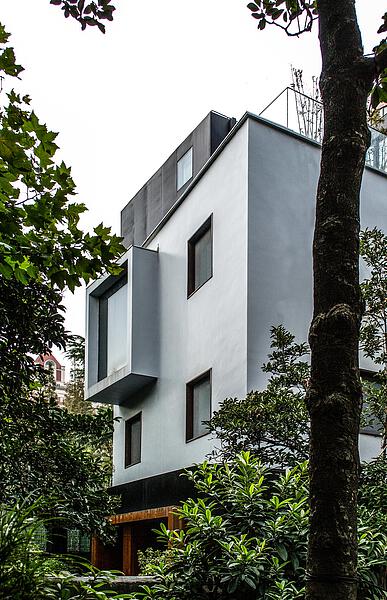The Overlapping Land/House | Cluny Road Residence
The Overlapping Land/House – Cluny House
For a private residence in Singapore, Shanghai-based architecture firm Neri&Hu Design and Research Office pays homage to the client’s Chinese roots by taking cues from the Siheyuan courtyard house, a vernacular typology found in the northern regions of China. In essence, the courtyard house can be thought of as a spatialization of Chinese notions of domesticity.
It expresses the relationship between periphery and core, celebrating the inner zone as a space for the family to gather. It speaks to the complex relationships between the “self” and the “communal,” layering public and private in a spatial procession. It is an embodiment of hierarchical order inherent in multi-generational living, unique to the traditional Chinese family structure. While respecting these ideologies, Neri&Hu offer a fresh reinterpretation of this traditional typology in order to contextualize the project, situated in a tropical climate and needing to accommodate four families across three generations.
Rather than simply adopt the rudimentary formation of a courtyard house, Neri&Hu have evolved it from a blockish mass into two elegant “L” shaped volumes which begin to open up the inner courtyard to the lush nature that surrounds. Continuity between exterior and interior, a typical feature of tropical living, is taken literally here. Lifting the private living quarters off the ground, the ground surface across the site is expressed as a monolithic base which flows seamlessly from inside to outside.
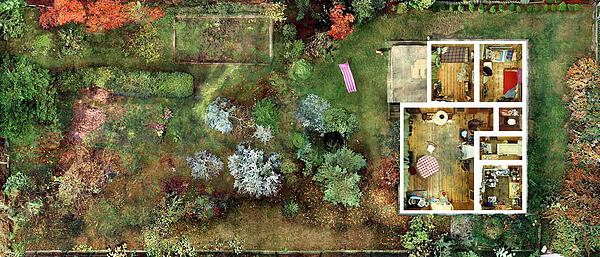
When the boundaries of site lines, or between inside and outside spaces are blurred, this allows for a different experience of space, occupying a larger space than intended. Aneta & Jan's Series of photos document the interiors of 10 apartments in Warsaw. Unique photography technique used, in which the overall picture seems “scanned” by stitching together an aggregate of aerial photographs (like Google Earth). This particular image is striking in that the image is cropped at (supposedly) the fence/property line so we can see the house as a room in the extended field of the landscape.
Aneta Grzeszykowska & Jan Smaga. Plan #10, 2003.
The transparent glazing of the first floor allows the landscape to penetrate into the interior while living spaces begin to spill out into gardens and pools and in essence “occupy” and “claim” the outside. A meandering strolling path encircling the site produces uninhibited views across the property, while water features stitch the building inextricably into the surrounding landscape. In effect, the entire stretch of land is here occupied; the whole site becomes “home.”
The layering and overlapping of materiality in the house is a key strategy in reinforcing the notion of continuity, from the uninterrupted vals quartzite ground plane with glass enclosed public areas to the wood-clad private spaces above.
The ebonized teak louvers enveloping the bedrooms on the second level are all operable to allow individual inhabitants of each of the thirteen bedrooms to adjust the degree of their connection to the outside, both climatically and visually. On the corridor side of the bedrooms, additional perforated wood screens in white oak can fold and be tucked away, allowing full openness across the depth of the building.
Double-height spaces begin to reveal the strata of the materially distinct layers, while at the same time encouraging interaction between personal and communal realms. Blurring the boundaries of inside/outside, land/house, private/public, Neri&Hu’s design for this 2,888 m² house is a series of complex spatial conditions which respond to the intricate nature of inhabitation, tradition, family, and domesticity.

When the boundaries of site lines, or between inside and outside spaces are blurred, this allows for a different experience of space, occupying a larger space than intended. Aneta & Jan's Series of photos document the interiors of 10 apartments in Warsaw. Unique photography technique used, in which the overall picture seems “scanned” by stitching together an aggregate of aerial photographs (like Google Earth). This particular image is striking in that the image is cropped at (supposedly) the fence/property line so we can see the house as a room in the extended field of the landscape.
Aneta Grzeszykowska & Jan Smaga. Plan #10, 2003.
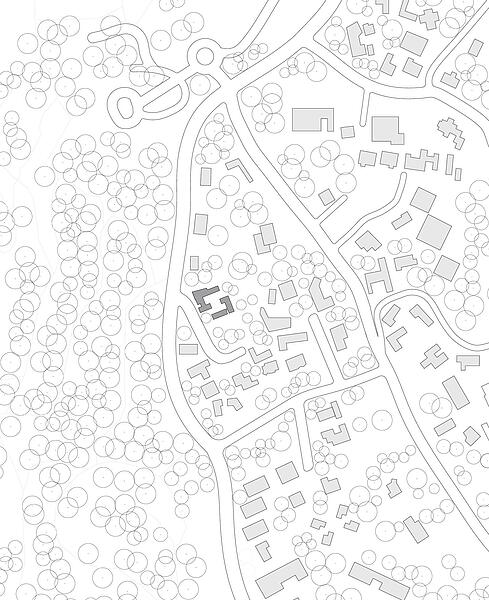
Gross Area
2,888 m²
Status
Complete
Completion Date
January 2012
Duration
November 2006 – January 2012
Address
Cluny Road, Singapore

